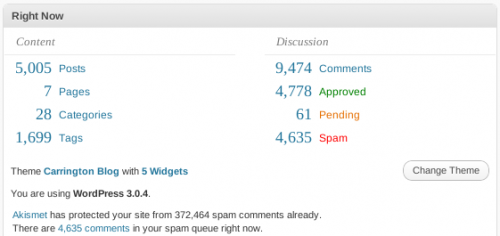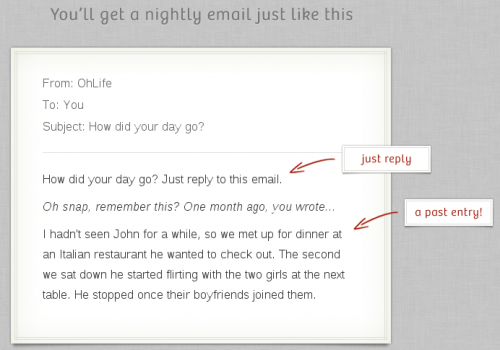New Year is the perfect time to raise hopeless hopes. Like any given Monday, or the first day of any month, it’s the time to start something that you hope to finish. People promise they will start (or stop) doing all sorts of things – quit smoking, start exercising, stop procrastinating, and so and so forth. This is non-sense of course, but that’s just what we, humans, do.
So in the spirit of a new era start, WordPress.com issued a challenge for 2011 – blog more. To help you complete the challenge, they created a separate website – DailyPost. This one will be updated daily with ideas and other bits of inspiration. All you need to do is post a single blog entry every day throughout 2011. If that sounds like too much, they have a lighter variation – a post a week. You don’t have to follow their subjects – post whatever you want. Just write something either daily or weekly. And to help others find and follow your stuff, tag your posts with postaday2011 or postaweek2011. That’s all.
I’ve done similar challenges before. Not necessarily they were centralized or aligned with someone else, but I did put myself to such a task before. And not only in blogging. For example, I’ve learned most that I know about photography in just a couple of months. It was when I followed someone advice to make a photograph every day. It didn’t matter what I was making a photograph of. Just that I made one. Of course, there were days when I didn’t have the camera around, or was too busy, or too lazy. But I was pretty close to a daily picture (see POTD – Picture Of The Day tag archives).And it did magic to my skills. And so did a blogging challenge.
Someone said somewhere that creativity requires fluency. In order to be creative, you have to be fluent. If you want to be creative in photography, your camera and equipment shouldn’t stay in your way. If you want to speak or write better, you shouldn’t need a dictionary for every other word. If you want to do experimental dancing, you should have good control of your body. And so on and so forth. But there is only one way to get better at something. It’s do that something. The more, the better.
So, if blogging sounds interesting to you, you should blog more. And it’s much easier to do it when you are not alone. Now is the time.
I’ve been quite busy last year. And I blogged much less than in previous years. I wanted to do more. And now I think I will. I will follow up with the challenge. Will you?

